Who’s Responsible for Your Digital Carbon Footprint?
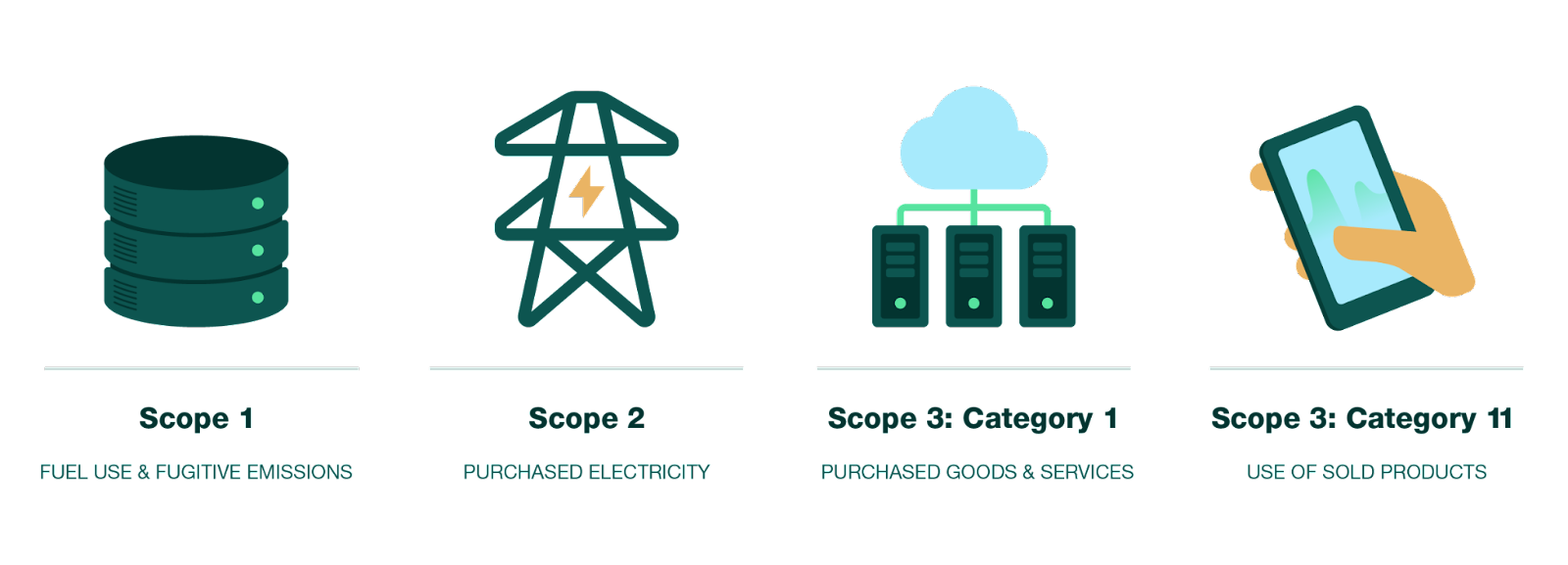
In this post, we explore the question of personal vs. organizational responsibility when it comes to taking meaningful action on your digital carbon footprint.
The Ethics of ‘Streamshaming’
In 2022, a site called Green Streamers published a post about how just five Twitch streamers generate 121,000 kg of CO2e every day. The post called out the platform’s top five streamers based on a tool called Twitch Tracker, which shares Twitch usage trends.
The estimates shared in their post were based on a June 2021 study by Carbon Trust, which focused on the carbon impact of video streaming. They also used the EPA’s Greenhouse Gas Equivalencies Calculator.
For context, 121,000 kg of CO2e is the equivalent of:
- Driving 785 gasoline-powered vehicles for a year
- Burning 4,029,653 pounds of coal
- Flying from LA to NYC 24,280 times
This is a lot of emissions, to be certain. Plus, Twitch has 140+ million users and these numbers supposedly represent the impact for only five of them. However, that’s only part of the story.
Platform as Social Safety Net?
When COVID-19 hit, many people who worked in the entertainment industry—like nightclub DJs, performers, and so on—turned to Twitch to earn a living when gathering in person wasn’t possible.
In this regard, the platform provided a social safety net for people during economically challenging times. Yet, now that Amazon owns Twitch, the streaming platform regularly gets criticized for exploiting artists.
A truly responsible digital future requires an internet that is both:
- powered by renewable energy
- provides a strong social foundation—grounded in climate justice—for people and communities around the world.
Just one of these things is not enough.
So, using the Twitch example as a baseline, how might purpose-driven organizations take emissions responsibility in ways that are both meaningful and within our means? We all use the internet every day to create value for our organizations. Where do we draw the line on our own culpability versus that of others when it comes to our digital carbon footprint?
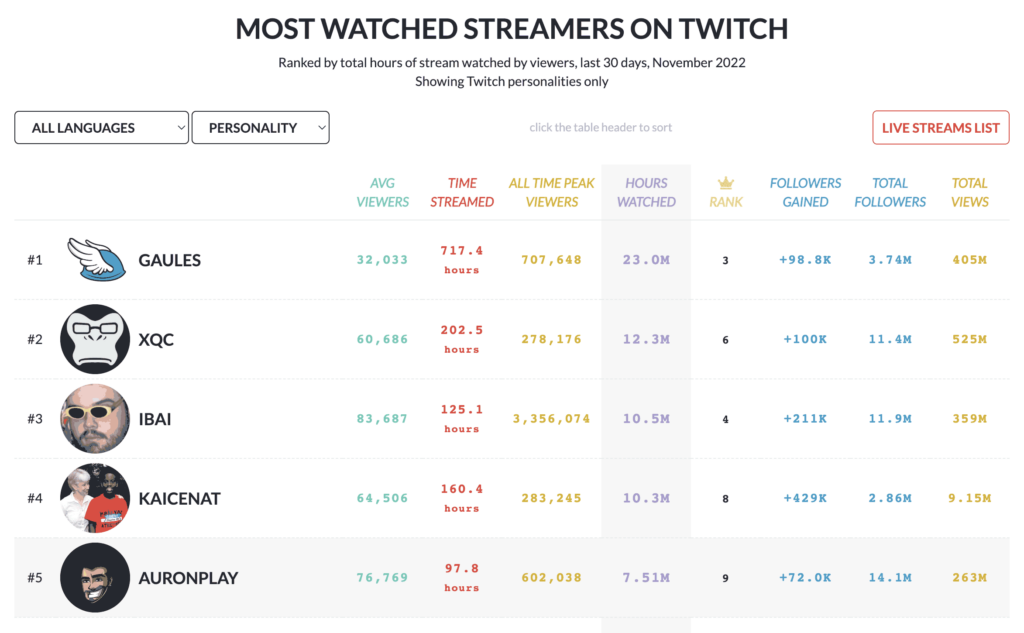
Individual vs. Organizational Responsibility
Regardless of whether the estimates shared by Green Streamers are accurate or not, the Twitch story brings up important questions about personal vs. organizational responsibility. This is especially relevant given the urgent climate emergency we’re in:
- Should we really shame individuals for using platforms that are publicly available?
- Shouldn’t tech companies be responsible for what happens on their platforms?
- What are the boundaries of organizational responsibility when it comes to digital emissions and climate justice?
In the research Mightybytes has conducted for Ecograder, we surveyed or interviewed people at hundreds of organizations. Our findings revealed that business leaders—even those at purpose-driven organizations like Certified B Corps—rarely consider their digital carbon footprint as part of an overall climate strategy.
There are several common reasons for this:
- People don’t understand the environmental impact of their digital products or services, let alone the impact of their digital supply chains.
- Fewer still don’t know how, specifically, digital sustainability applies to them.
- There aren’t many tools readily available to measurably lower your digital footprint (though this is changing).
- Smaller organizations and most nonprofits have few resources to prioritize digital sustainability alongside digital accessibility, data privacy, security, and other ‘best practices’ they’re trying to focus on. This undermines their digital resilience.
- Finally, many people also don’t understand what is within their means to change.
Adding to this confusion:
- Most digital providers consider energy data proprietary information and don’t make it freely available. They want to encourage more use of their platforms, not less.
- Most importantly, legislation is lacking to incentivize improvement.
With this confusing landscape, is it surprising that widespread traction on these issues is difficult to achieve?
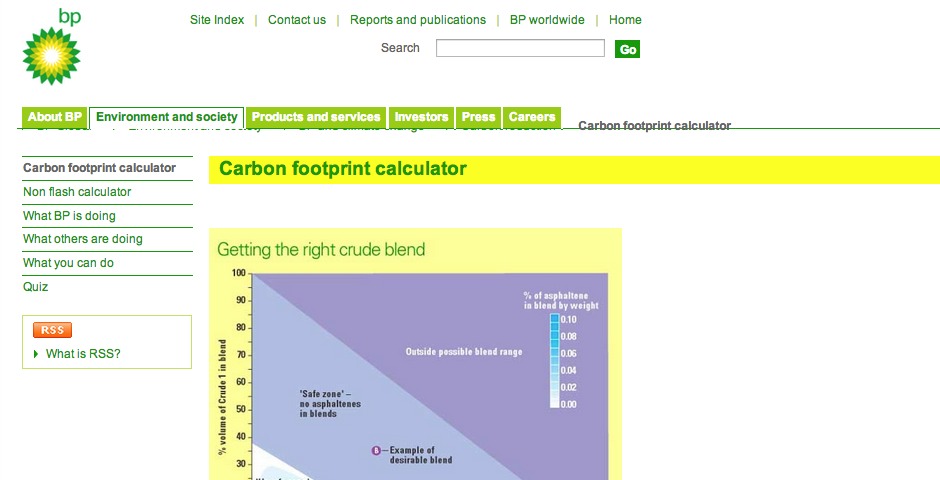
So, Whose Digital Carbon Footprint is it?
Of the total estimated cumulative greenhouse gas emissions released by human activity (excluding carbon dioxide from land use, land use change and forestry, and agricultural methane) between 1988 and 2015, 71% of those emissions originated from 100 fossil fuel producers. This includes the emissions from producing fossil fuels (like oil, coal and gas), and the subsequent use of the fossil fuels they sell to other companies.
— Full Fact, Are 100 Companies Causing 71% of Carbon Emissions?
Since as early as the 1950s, industries have promoted the idea of personal responsibility to reduce government regulations and divert our attention away from their own accountability in some of society’s biggest problems.
To be clear, the majority of emissions can be traced back to a handful of large corporations.
In fact, fossil fuel company British Petroleum (BP)—with the help of PR agency Ogilvy & Mather—invented the carbon footprint in the early 2000s. Personal carbon footprinting sends a message that the problems which arise from using fossil fuel-based products or services are yours to deal with, not BP’s. And that’s a big problem.
Also, the internet is no exception to this. The subterfuge is even more murky when it comes to our digital products and services.
You Are the Product, Not the Problem
While Big Tech is ahead of many other industries regarding renewable energy adoption, the tech industry has effectively shirked responsibility for other problems that happen at its behest:
- Companies that follow surveillance capitalism business models are more than happy to let you use their products and services for free in exchange for your personal data, which they sell to other companies for huge margins.
- Large social media platforms don’t want to patrol their platforms, even though mis/disinformation—some of which is climate-related—runs rampant.
- Finally, to bring this full-circle, our collective activity on Big Tech platforms has contributed to the internet’s massive environmental impact.
Plus, social media algorithms are programmed to prioritize ‘engagement’, which often favors extreme positions that fuel discontent and promote discrimination. While we fight, these platforms rake in huge profits every year.
More importantly, large portions of these profits are earmarked to lobby politicians for legislation that works in their favor, perpetuating the exploitative and extractive ways in which they conduct business. Our discontent fuels their profits. Our distraction allows them to continue unabated.
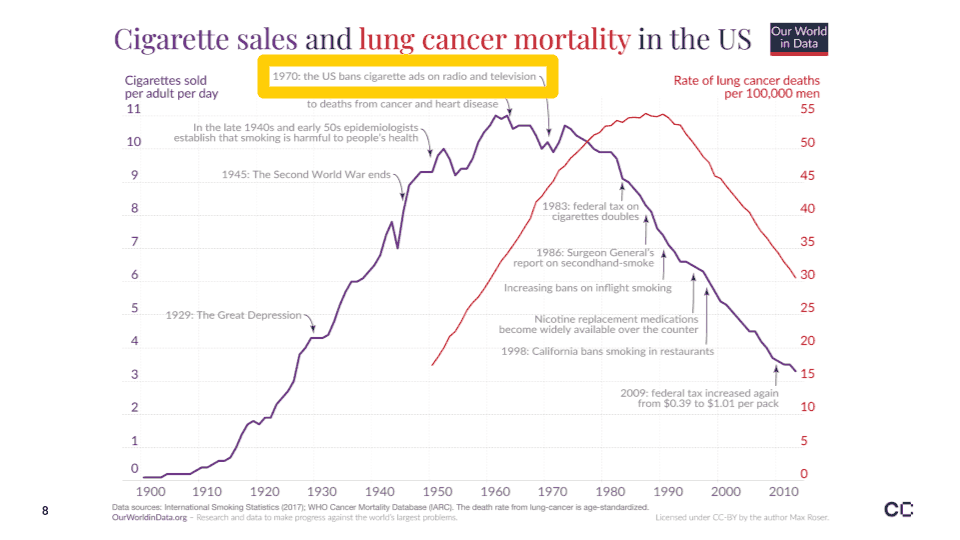
Agency Culpability
While a ban on advertising might seem like a radical and perhaps dangerous idea, I think it raises some important questions about the impact of the advertising sector on the health of our planet, our personal wellbeing and the hold that it has on the economy.
— Tom Greenwood, What if There Was No Advertising?
As an agency, we would be remiss if we didn’t point out the role advertising and marketing play in addressing the climate crisis. Our industry is powerfully persuasive. It also has blood on its hands.
For example, fossil fuel companies would have you believe that they are part of the solution rather than the problem:
- Fossil fuel giant Shell has publicly expressed intent to become a zero emissions energy business by 2050. However, a Dutch lawsuit found that “Shell’s operating plans and budgets do not reflect Shell’s Net-Zero Emissions target.”
- Similarly, 80% of Chevron’s ads over a year contained terms like sustainable, renewable, environment, and clean while only 1.8% of their capital expenditures went to non-oil and gas projects during the same time period.
Overall, the fossil fuel industry invests 99% of their capital into expanding oil and gas production with just 1% going to clean energy projects. Yet, these public messages—powered by agencies—tell a different story. Meanwhile, their collective sleight of hand puts billions of lives at risk.
The Long History of Agency Greenwashing
If you’re interested in learning more about how corporations have used agencies for decades to deflect blame from themselves to individuals, check out:
- Ono Mergen’s The Story of Advertising’s Most Famous Tear
- EcoWorlder’s Who Invented the ‘Carbon Footprint’? The Shocking Origins
- Clean Creatives’ F List Report
- Cory Doctorow’s Dow promised to turn sneakers into playground surfaces, then dumped them in Indonesia
So many industries—and the agencies they hire to tell their stories—excel at this type of misleading storytelling. Where does passing the buck stop and true corporate responsibility begin?
The reality is that individual actions, though important, will never create the change we need to successfully address the social and environmental challenges ahead. Fossil fuel companies know this. Coupled with a Big Tech industry that is happy to look the other way while accepting huge amounts of fossil fuel advertising dollars, these greenwashing campaigns enable Big Oil to pass the blame and continue with business as usual. This is disastrous for us all.
Individuals and organizations across sectors need to work together to change social and economic systems that enable climate injustice and runaway emissions. This requires that we hold fossil fuel companies accountable while also taking responsibility for our own impact. How do we do this?
- Support public policy that advances renewable energy and takes fossil fuel companies to task.
- Center the voices and concerns of those most impacted by the climate crisis in your efforts.
- Create organizational climate strategies grounded in clear emissions accounting standards.
For the latter, understanding emissions scopes can help us better understand how to make measurable, collective progress and where the boundaries of our own responsibility might lie.
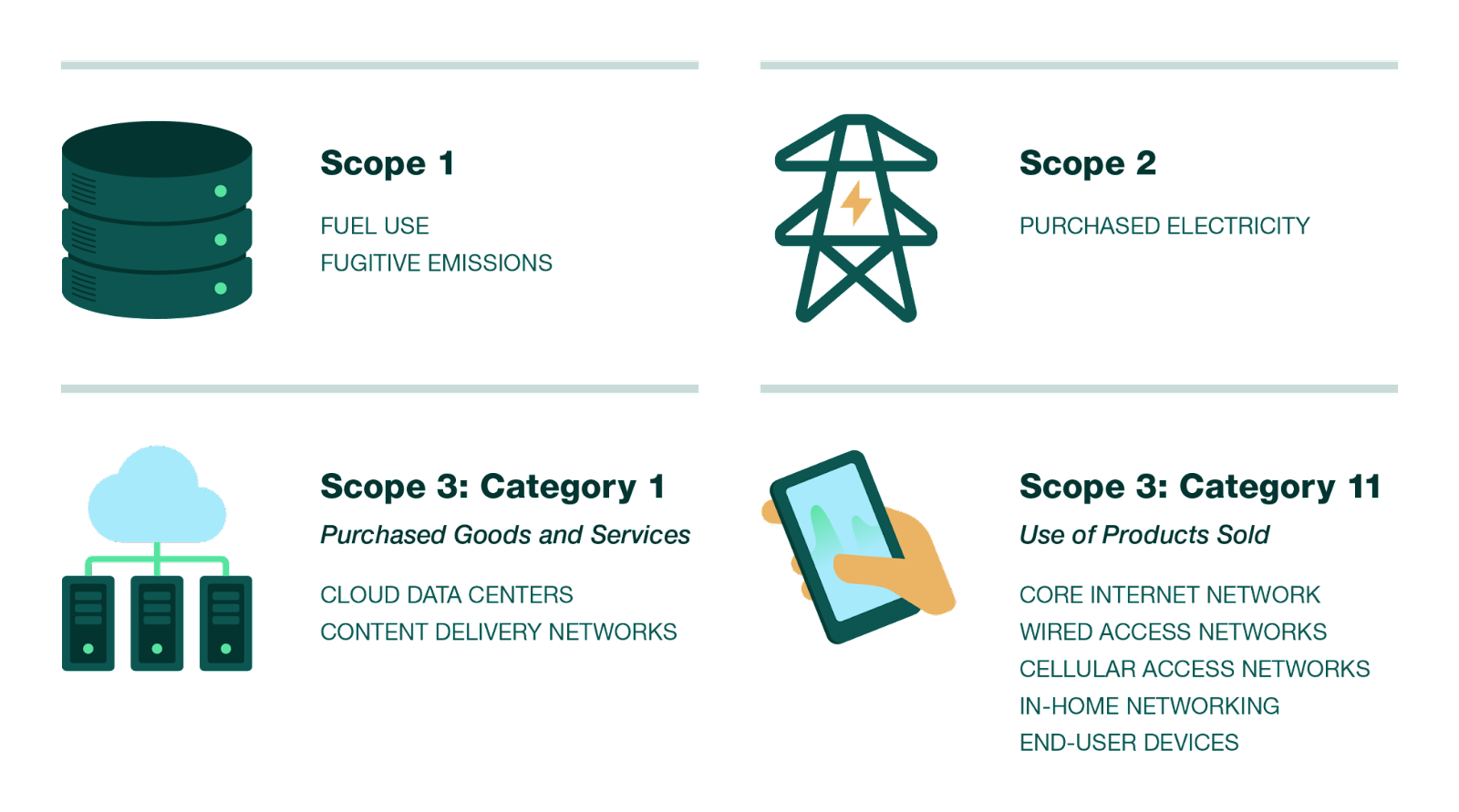
Emissions Scopes and Your Digital Carbon Footprint
Emissions from supply chains, known as Scope 3, can represent up to 90 percent of a company’s overall footprint, and these emissions are notoriously tricky to tackle because they often fall outside of a company’s direct control. Having real data rather than estimates can help facilitate reducing those emissions, as they become easier to pinpoint.
— Kate Zerrenner, ‘Best of Breed’ Sustainability Software May Be The Worst Solution, Triple Pundit
The Greenhouse Gas (GHG) Protocol is the world’s most widely used greenhouse gas accounting standard. It breaks emissions into three types or ‘scopes’:
- Scope 1: Direct emissions associated with emissions sources that are owned or otherwise controlled by an organization
- Scope 2: Indirect emissions associated with electricity used by an organization
- Scope 3: Upstream and downstream emissions associated with an organization’s value chain
Scopes 1 and 2 are relatively straightforward. To learn more about how Scopes 1 and 2 impact digital businesses, check out our post What is ‘Net Zero’ for a Digital Business?.
Scope 3 emissions are more complicated. It includes fifteen categories of activities related to emissions reduction in an organization’s value chain. Two of these are directly related to digital products and services:
- Purchased goods and services
- Use of products sold
Because of this, Scope 3 is also most relevant to addressing your digital carbon footprint. For more details on Scope 3 emissions try GHG Protocol’s Scope 3 Evaluator.
Under the GHG protocol, organizations identify the boundaries of their emissions impact and devise a reduction and mitigation plan.
Defining Boundaries for Scope 3 Responsibility
Given the points listed above, it is critical that organizations clearly understand the boundaries of their emissions responsibility. Defining organizational boundaries will help you prioritize which emissions you can take responsibility for and which might be out of your purview.
Organizational Boundaries
The GHG Protocol recommends defining organizational boundaries in the following ways:
- Equity Share Approach: An organization will account for GHG emissions from operations according to its share of equity in those operations.
- Control Approach: Organization selects between financial and operational emissions criteria based on what it controls. For example, it does not include emissions for operations in which it has a financial stake but no control over.
- Financial Control: Organizations report on 100% of anything where they bear high risk or potentially reap high rewards based on their financial control. This includes subsidiaries, affiliates, joint ventures, fixed asset investments, and franchises.
- Operational Control: Organizations report on anything where they have authority to create and apply operating policies.
Operational Boundaries
Defining the scope of your direct operational influence is defined based on the following criteria:
- Operations: Direct (Scope 1) and indirect (Scope 2) emissions associated with an organization’s operations and energy purchases.
- Upstream Activities: Emissions that occur during the creation, production, and manufacturing of products or services the organization purchases.
- Downstream Activities: Emissions from transportation, distribution, processing, use, and disposal of an organization’s products or services.
Historically, Scope 3 reporting has been optional while Scopes 1 and 2 are required. However, in late 2022, the International Sustainability Standards Board (ISSB) voted unanimously to require company disclosures on all three emissions scopes. In other words, it may not be long before you are required to report on and devise a reduction plan for Scope 3 emissions alongside Scope 1 and Scope 2.
The sections above just scratch the surface of a complex topic. However, the message is clear: if you own or otherwise control an emissions source, the responsibility is yours.
When it comes to the internet, this is a complicated endeavor since so many websites, apps, and other digital products are sewn together from third-party services. For example, a single website might include dozens of third-party plugins, APIs, frameworks, or shared libraries, each of which is owned by a different person or organization.
For a full deep-dive on defining organizational boundaries in emissions reporting for Scope 3, download the GHG Protocol’s Corporate Value Chain Standard.
Taking Responsibility For Your Digital Carbon Footprint
Individual action and personal responsibility are good and necessary. However, it is the producer’s responsibility and obligation to provide products in ways that protect the health of people and the environment.
— Joel Brammeier, CEO, Alliance for the Great Lakes
To recap what we covered in this post:
- Individual actions: Focus your efforts on things that are within your grasp to change. Educate others and encourage suppliers and those whose products or services you purchase to adopt impactful climate strategies.
- Organizational boundaries: If you own a digital product or service, you are responsible for its impact, including emissions generated by purchased goods and services used in its creation and the use of products or subscriptions sold.
- Scope 3 emissions: With good policies and practices in place, organizations can make a bigger difference, especially when it comes to Scope 3 emissions in your value chain.
- Public policy: Finally, we need legislation that’s grounded in climate justice for true accountability. Support good public climate policies and the advocates working towards them. Do this through volunteer time, lobbying, financial donations, or other means.
Understanding responsibility is the first step toward taking meaningful climate action. Leaders can harness the information in this post to include to include digital products and services in their sustainability efforts and redefine success in marketing. However, knowing how to take the first step is often unclear. If you still have questions, please reach out.
Digital Carbon Ratings, now in Ecograder.
Understand how your website stacks up against industry carbon averages with this new feature.
Try Ecograder


